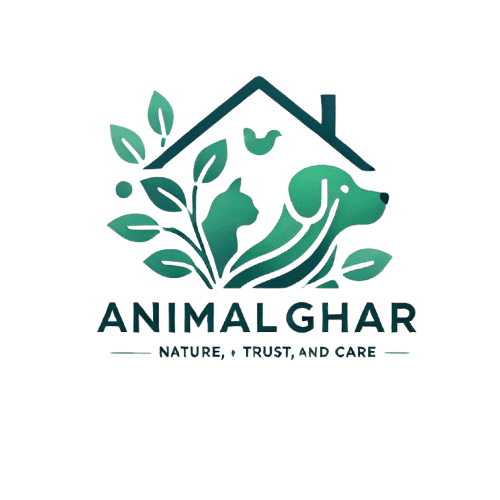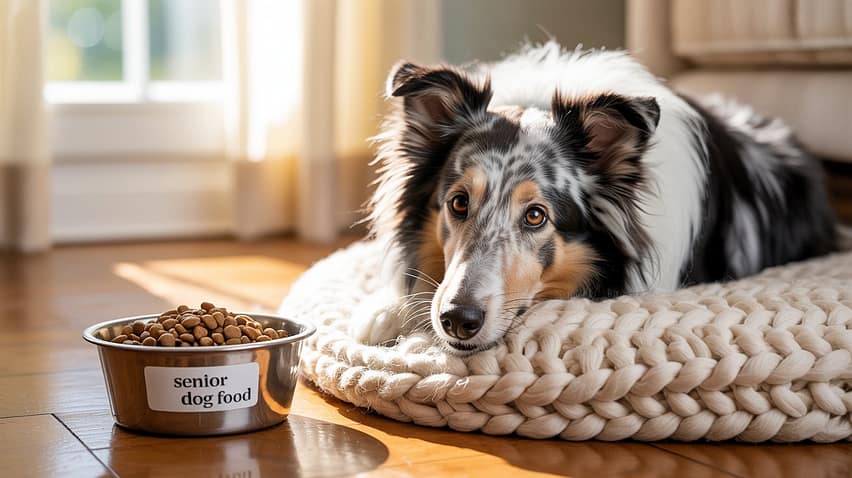Why Choosing the Best Food for Shetland Sheepdog Matters
The Shetland Sheepdog (or Sheltie) is a bright, affectionate, and active breed. These miniature collies are known for their intelligence, energy, and loyalty. But behind those sweet eyes and fluffy coats lies a sensitive digestive system, meaning choosing the best food for a Shetland Sheepdog is crucial for their health and happiness.
The right diet can enhance your dog’s coat, extend their lifespan, reduce health issues, and keep their mind sharp and focused — all traits Shelties are prized for.
Best Food for Shetland Sheepdog: Top 5 Vet-Recommended Choices
| Brand | Type | Key Features | Rating |
|---|---|---|---|
| Royal Canin Sheltie Adult | Dry | Breed-specific nutrients for Shelties | ⭐⭐⭐⭐⭐ |
| Orijen Original | Dry | High protein, grain-free, whole-prey formula | ⭐⭐⭐⭐⭐ |
| Hill’s Science Diet Sensitive Stomach & Skin | Dry | For sensitive digestion and skin | ⭐⭐⭐⭐ |
| Acana Singles + Wholesome Grains | Dry | Limited ingredients, great for allergies | ⭐⭐⭐⭐ |
| Merrick Grain-Free Texas Beef | Wet | High meat content, no grains | ⭐⭐⭐⭐ |
These foods are formulated with high-quality ingredients and meet the specific nutritional needs of small, agile breeds, such as Shelties.
What Nutrients Do Shelties Need?
To choose the best food for a Shetland Sheepdog, you need to understand their dietary requirements:
-
First, protein is essential for supporting muscle and tissue growth. Aim for a content of 22–30% in adult formulas.
-
Next, healthy fats — particularly omega-3 and omega-6 fatty acids — play a crucial role in maintaining healthy skin, coat, and brain function.
-
In addition, fiber helps regulate digestion and promotes consistent, healthy
stools.
-
Moreover, a balanced mix of vitamins and minerals supports the immune system and various metabolic processes.
-
Equally important, glucosamine and chondroitin contribute to joint health, which is vital for active and agile Shelties.
-
Finally, antioxidants help combat cellular damage and provide a much-needed boost to your dog’s overall immunity.
Ingredients to Look For in Quality Dog Food
Your Sheltie’s food should ideally list a real protein source as the first ingredient. Specifically, look for:
-
First and foremost, real meat such as chicken, turkey, lamb, or salmon
-
In addition, digestible carbohydrates like sweet potatoes, peas, and brown rice
-
Furthermore, healthy fats from fish oil or flaxseed provide essential omega fatty acids
-
Also, natural sources of vitamins include blueberries, spinach, and carrots
-
Lastly, probiotics and prebiotics to support digestive health
Together, these ingredients help support a vibrant coat, maintain lean body mass, and promote long-lasting energy for your active and intelligent Sheltie.
What Ingredients Should You Avoid?
Not all dog food is created equal. Avoid:
- Artificial colors and preservatives (BHA, BHT, ethoxyquin)
- Meat by-products (unspecified, low-quality protein)
- Excess salt and sugar
- Fillers like corn, wheat, and soy (especially in allergy-prone dogs)
These can lead to food sensitivities, itchy skin, and digestive issues in Shelties.
Dry vs Wet Food: What’s Best for Shetland Sheepdog?
| Aspect | Dry Food | Wet Food |
|---|---|---|
| Convenience | Easy to store, feed | Requires refrigeration |
| Hydration | Lower moisture | Higher moisture content |
| Dental Health | Helps clean teeth | Can cause tartar buildup |
| Cost | More affordable | Pricier |
| Taste | Less appealing | Highly palatable |
👉 Best approach: Combine both for balance and variety — dry food for dental health and wet food for hydration and taste.
Grain-Free or Grain-Inclusive?
Unless your Sheltie has a diagnosed grain allergy, whole grains like brown rice and barley are fine. Grain-free diets can be beneficial, but they may lack taurine, so balance is crucial.
Grain-free brands:
- Orijen
- Merrick
- Acana Singles
Raw and Homemade Diets: Are They Safe for Shelties?
Pros:
- Full ingredient control
- No preservatives or fillers
Cons:
- Time-consuming to prepare
- Hard to balance nutrients
- Risk of bacterial contamination
Always consult a vet before switching to a raw or DIY diet. You may need supplements for calcium, vitamins, and joint support.
Best Food for Sheltie Puppies
Puppies need higher protein, calories, and DHA for brain development. Look for:
- Royal Canin Puppy Small Breed
- Wellness Core Puppy
- Farmina N&D Puppy
Puppies should eat 3–4 meals per day until 6 months old.
Best Food for Senior Shetland Sheepdogs
Older Shelties need fewer calories but more joint and heart support. Best picks:
- Hill’s Science Diet Senior
- Nutro Ultra Senior
- Blue Buffalo Life Protection Senior
Look for added glucosamine, L-carnitine, and antioxidants.
How Much Should You Feed a Shetland Sheepdog?
| Life Stage | Weight | Calories/Day |
|---|---|---|
| Puppy (3–6 mo) | 5–7 kg | 350–450 kcal |
| Adult | 7–10 kg | 500–600 kcal |
| Senior | 7–10 kg | 400–500 kcal |
Actual feeding depends on activity level and metabolism. Always follow the label and adjust based on your dog’s weight and health.
Feeding Schedule and Portion Control
- Puppies: 3–4 meals/day
- Adults: 2 meals/day
Stick to a consistent feeding time. Avoid overfeeding and measure portions to prevent obesity, a common issue in Shelties.
Food Allergies in Shelties: Signs and Solutions
Symptoms of food allergies:
- Excessive itching or licking
- Diarrhea or vomiting
- Chronic ear infections
- Red or inflamed skin
Solution: Switch to limited-ingredient or novel protein diets (duck, rabbit, venison). Brands like Hill’s Z/D or Natural Balance LID are effective.
Nutrition Table by Life Stage
| Stage | Key Nutrients | Purpose |
|---|---|---|
| Puppy | High protein, DHA | Growth & brain development |
| Adult | Balanced protein/fat | Maintain muscle and energy |
| Senior | Lower calories, joint support | Prevent weight gain, protect joints |
Real Dog Owner Experiences
Many Sheltie owners have noticed significant improvements in their dogs’ health after switching to high-quality food. To begin with, Sarah from the UK shared, “After switching to Royal Canin Sheltie Adult, my dog’s coat became silky and his digestion improved.” Likewise, James from the US remarked, “Orijen Original gave my Sheltie so much energy! It’s pricey but worth it.” Furthermore, Priya from Canada noted, “We tried grain-free and our Sheltie’s itching stopped within a week!”
How to Transition to New Food
Transition slowly over 7–10 days:
-
Days 1–2: Start with 75% old food and 25% new food to ease your Sheltie into the change.
-
Days 3–4: Then, adjust the ratio to 50% old food and 50% new food.
-
Days 5–6: Next, serve 25% old food mixed with 75% new food.
-
Day 7 and beyond: Finally, transition to 100% new food for a complete switch.
This helps prevent GI upset.
Common Feeding Mistakes to Avoid
- Free feeding or overfeeding
- Ignoring ingredient lists
- Giving table scraps
- Sudden food changes
- Not monitoring weight
Helpful Supplements for Shetland Sheepdogs
- Omega-3: For coat and joints
- Glucosamine/Chondroitin: Joint support
- Probiotics: For gut health
- Multivitamins: If feeding homemade
Ask your vet before adding supplements.
FAQs About Shetland Sheepdog Nutrition
What is the best food for a Sa hetland Sheepdog with allergies?
Limited-ingredient or hypoallergenic formulas like Hill’s Z/D or Natural Balance LID.
Can Shelties eat human food?
No. Many human foods (onion, garlic, chocolate, grapes) are toxic. Stick to vet-approved treats.
How often should I feed my Sheltie?
Twice daily for adults. Puppies need 3–4 smaller meals.
Do Shelties need breed-specific food?
Not necessarily, but formulas like Royal Canin Sheltie are tailored for their needs.
Are grain-free diets safe?
Yes, if balanced. Be cautious about taurine deficiencies.
Should I rotate dog food?
Only if your dog has no sensitivities. Gradual rotation can provide variety.


 stools.
stools.